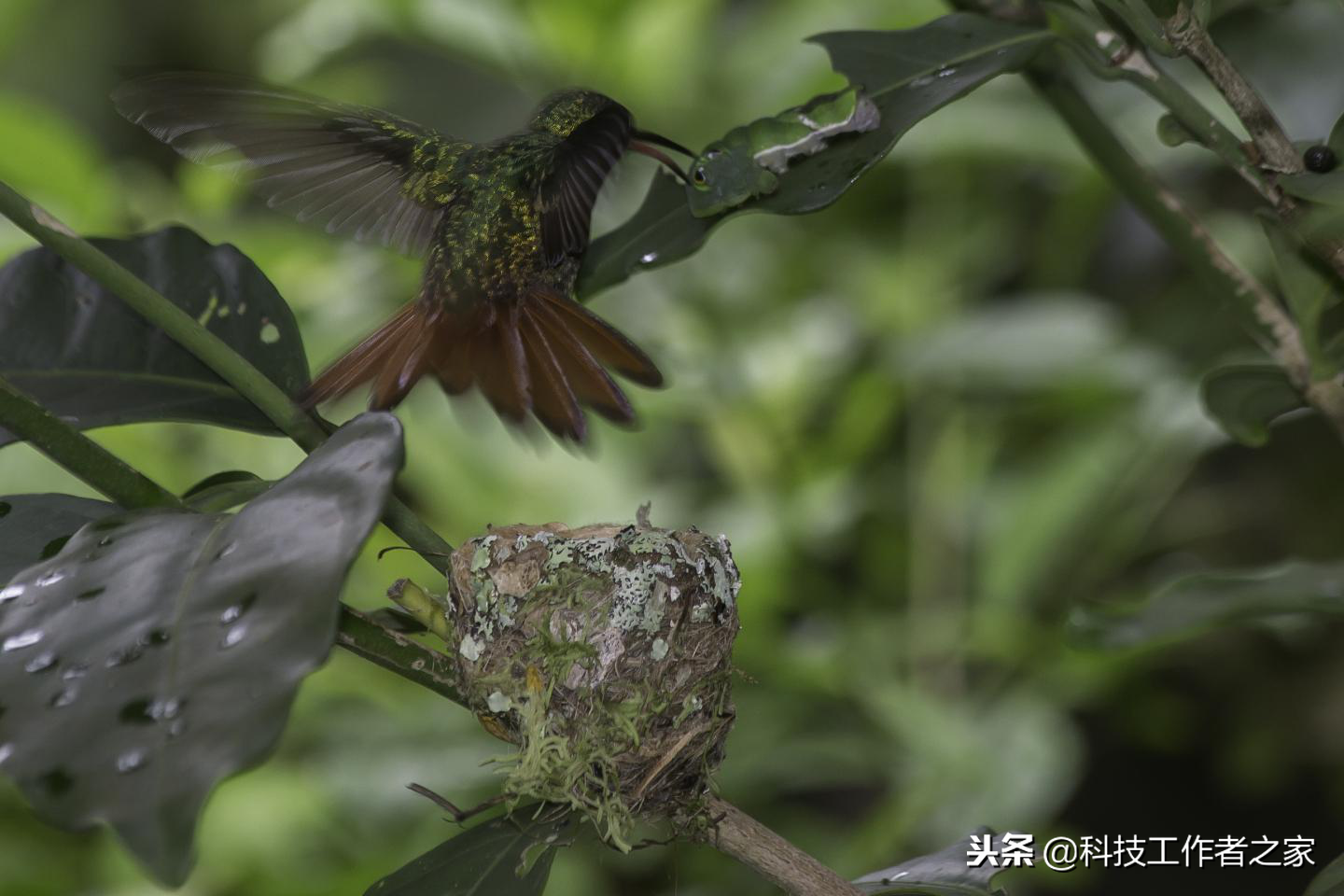
Hummingbirds peck at the caterpillar's eye spots
When a caterpillar disguises itself as a snake to fend off potential predators, it may actually treat predators as snakes. That's exactly what happened in Costa Rica earlier this year, when researchers witnessed a hummingbird attacking a "snake" to protect its nest, but in reality the "snake" was the larvae of a moth. A description of the "war" was published in the American Ecological Society's journal Ecology.
The larvae of these moths look like caterpillars, while the adults resemble dry leaves and are sometimes referred to as dead leaf moths or Costa Rican leaf moths. When the caterpillar is disturbed, the top of the head swells, revealing a pair of eye sockets, and raises its head, moving left and right, playing a green parrot snake known for preying on nesting birds. Their "battlefield" is located on a small tree, and the caterpillar is about 10 centimeters away from the nest of hummingbirds. When the researchers rushed to the "battlefield" to find the fake snake, it was enjoying a leaf meal on the nest.
James H. Marden, first author of the paper and in the Department of Biology at Pennsylvania State University, said: "Hummingbirds have several typical flight behaviors: visiting flowers, preying on flocks of small insects, chasing each other, mating/field show flight. But their "siege behavior" in the face of the threat of nests is not common, and it is easy to identify as long as you are familiar with their flying behavior. While one can recognize this from a distance, the source of their restlessness can only be noticed when viewed up close. ”
The larvae and adults of various butterflies and moths have eye-like spots that can be used to defend against potential predators. It is extremely rare to observe how these eye spots affect the interaction of animals in their natural environment. This interaction occurs in a secondary growth belt between the Pacific Ocean and the virgin rainforest of the Osa Peninsula in Costa Rica. The authors argue that the female brown-tailed hummingbird flying around the nest may have disturbed the caterpillar, causing the caterpillar to reveal its own eye spots, which in turn prompted the brown-tailed hummingbird to use "siege behavior" and peck at the "snake" to protect its nest.
Marden said: "Hummingbirds and caterpillars are having a hard time getting out of this 'battle', hummingbirds are struggling to protect their nests, and caterpillars just want to eat their leaves. For hummingbirds, a snake-like creature so close to its nest is a great threat and disturbance that cannot be ignored for a long time. And the caterpillar seems to be more determined. When a camouflaged animal shows its might, it will be unwavering and it will be difficult to remove the camouflaged mask. Therefore, I think the caterpillar has no choice but to continue to pretend to be a snake until the threat from the opponent is lifted. ”
Eventually, the caterpillar fled in defeat and gave up foraging, and the hummingbird returned to normal nesting behavior. The day after the war, researchers found that caterpillars were still foraging on the leaves of the same plant, but had moved as far away from hummingbirds' nests as possible. It has scars on the edge of its right eye socket, possibly traces of pecking. Apparently, the defeated caterpillar has learned its lesson.
When birds exhibit siege behavior with their eyes as their target, snakes are usually killed by repeated pecking by birds near their head and neck, and the "war" ends with the defeat of the snake. As for creatures that imitate snakes to protect themselves from being eaten, can they in turn protect themselves from similar imitations? Because hummingbird behavior is typical of snake resistance behavior, it can be assumed that hummingbird behavior can be imitated.
Marden is fascinated by this interaction and believes that future research on this behavior could use a small crawler robot to do eye spot experiments. "You'd want a cylindrical green device with the front end cocked upwards and revealing an eye socket," he said. This device should be infinitely remote-controllable and lightweight enough to attach to the leaves or stems of a plant. There are many experiments using clay or similar materials to make such models, but they all lack the ability to combine eye spots, movement and behavior, but robots can do it." With such a robot, researchers could alter the contrast of the eye-like features and spots of the robot's head to test various reactions of nest-keeping birds. Studies like this can definitively test the effectiveness of eye-like patterns with other imitation patterns in firing or repelling defensive attacks.
Compilation: Xiao Luo
Reviewer: Seamus
Editor-in-charge: Nam Hee